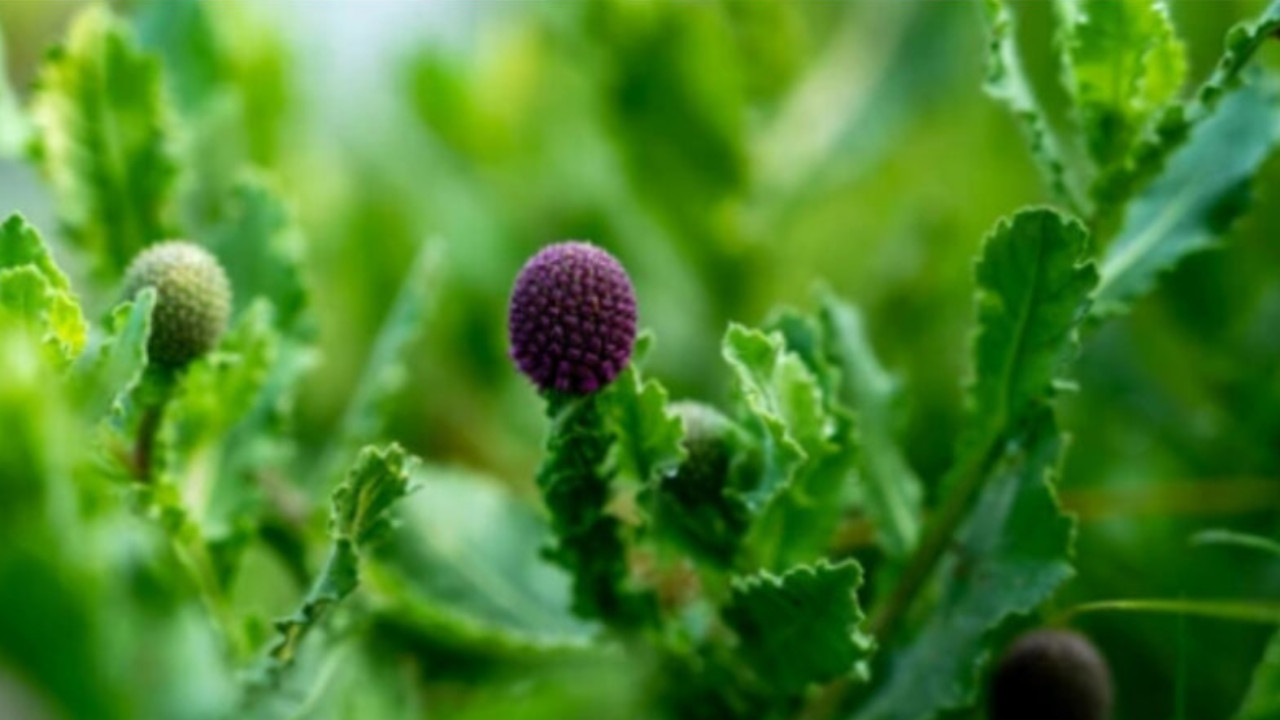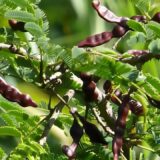Gorakhmundi : The Health Benefits And Traditional Uses
Gorakhmundi, scientifically known as Sphaeranthus indicus, is a remarkable medicinal plant native to India and Southeast Asia. For centuries, it has been a cornerstone of traditional Ayurvedic medicine, celebrated for its wide array of health benefits. 
This small herbaceous plant, characterized by its slender branches and spherical yellow flowers, has been utilized in various forms—leaves, flowers, and roots—each offering unique therapeutic properties. Rich in active compounds such as flavonoids, alkaloids, tannins, and saponins, Gorakhmundi contributes to a range of medicinal applications, from promoting digestive health to enhancing immune function.
Its historical significance and continued use in holistic practices underscore its role as a valuable resource in natural healing. As interest in herbal remedies grows globally, Gorakhmundi stands out as an important plant for those seeking to explore the benefits of traditional medicine in modern wellness.
How Does The Gorakhmundi Plant Look?
Gorakhmundi Plant In Ayurveda
In Ayurveda, Gorakhmundi is valued for its medicinal properties, despite not being classified under Charaka Dashemani. It is recognized by Sushruta and Vagbhata and belongs to the Surasaadi Gana group.
Synonyms
Gorakhmundi is known by various names, including:
- Alambusha
- Kadmbapushpi
- Bhukadamba
- Kulahala
Medicinal Properties
- Tonic Effects: Strengthens and invigorates the body.
- Deobstruent: Helps clear bodily obstructions and promotes normal functions.
- Alterative: Purifies the blood and supports overall health.
- Aphrodisiac: Enhances sexual vigor and vitality.
Specific Uses of Flowers
- Alternative Treatment: Can supplement conventional remedies.
- Cooling Agents: Provide soothing and calming effects.
- Tonics: Contribute to overall wellness and vitality.
Note
While Gorakhmundi has a rich history in Ayurvedic practice, individual experiences may vary. It’s advisable to consult a qualified Ayurvedic practitioner or healthcare professional for personalized advice and dosage recommendations.
Ayurvedic Properties of Gorakhmundi
Gorakhmundi (Sphaeranthus indicus) possesses several Ayurvedic properties that contribute to its traditional medicinal applications. Here are some key properties associated with Gorakhmundi:
- Rasa (Taste): Gorakhmundi exhibits a combination of tastes, including pungent (katu), bitter (tikta), and sweet (madhura).
- Virya (Potency): The plant is considered to have a hot (ushna) potency, which may enhance its therapeutic effects.
- Vipaka (Post-Digestive Effect): Gorakhmundi is believed to have a pungent (katu) post-digestive effect, influencing how it is metabolized in the body.
- Dosha Effects: It is known to pacify Kapha and Vata doshas, making it beneficial for balancing these energies and addressing related imbalances.
- Guna (Qualities): Gorakhmundi is characterized by qualities of lightness (laghu) and dryness (ruksha), contributing to its effectiveness in various treatments.
- Prabhava (Special Effect): The plant is recognized for its special effects, including nervine (supporting nerve health), diuretic (promoting urine production), vermicide (eliminating intestinal worms), and blood-purifying properties.
- Traditional Uses: In Ayurveda, Gorakhmundi is traditionally used to address a variety of health issues, including skin conditions, epilepsy, anemia, obesity, stomach diseases, dysuria, jaundice, cough, and as an aphrodisiac.
Note:
These Ayurvedic properties are based on traditional knowledge and should serve as a general guide. For personalized advice and specific treatment recommendations, it is advisable to consult with a qualified Ayurvedic practitioner or healthcare professional.
General Properties Of Gorakhmundi Plant
The Gorakhmundi plant, also known as Mundi, is recognized in Ayurveda for its distinctive properties related to taste, post-digestive effects, potency, and influence on the doshas (Kapha and Vata). Here are the key general properties:
- Taste: Gorakhmundi has a combination of tastes—pungent, bitter, and sweet—contributing to its therapeutic applications.
- Post-Digestive Effect: It exhibits a pungent post-digestive effect, influencing its metabolic properties.
- Potency: The plant is classified as having a hot (ushna) potency, which can enhance its effectiveness in treatment.
- Dosha Effects: Gorakhmundi is known to alleviate imbalances in Kapha and Vata doshas, which are the energies or forces governing physiological functions in the body.
- Attributes: It possesses light (laghu) and dry (ruksha) attributes, contributing to its overall nature and therapeutic effects.
- Nervine Properties: Mundi is recognized for its positive effects on the nervous system, supporting overall neurological health.
- Diuretic Effects: It acts as a diuretic, promoting urine production and aiding in the elimination of toxins from the body.
- Vermicide Properties: Gorakhmundi is believed to have vermicide properties, helping to expel intestinal worms.
- Blood Purification: It is considered a blood purifier, assisting in the cleansing and purification of the blood.
Applications in Treatment
Mundi finds application in treating various health conditions, including:
- Skin Affections: Used for managing skin issues.
- Filariasis: Provides support for this parasitic disease.
- Epilepsy: Aids in addressing seizure disorders.
- Anemia: Helps in managing low blood count.
- Obesity: Assists in weight management.
- Diseases of the Anal and Vaginal Canal: Used in various related treatments.
Note:
While Gorakhmundi has a rich history in Ayurvedic medicine for these purposes, individual experiences may vary. It is always recommended to consult with a qualified Ayurvedic practitioner or healthcare professional for personalized advice and appropriate usage recommendations based on your specific health condition.
Ayurvedic Formulations Based On Gorakhmundi Plant
1. Shwadamshtradi Ghrita: This formulation is used for its nourishing properties and is often indicated for various skin conditions and overall health. It is particularly effective in alleviating dryness and promoting skin vitality.
2. Chandanaadi Taila: Known for its cooling and soothing effects, this oil is used in treatments for skin disorders, and inflammation, and to enhance skin complexion. It also helps in calming the mind and reducing stress.
3. Amritaadi Taila: This formulation is recognized for its rejuvenating properties and is often employed in therapies aimed at detoxification and revitalization. It is beneficial for enhancing immune function and promoting longevity.
4. Parushaka Ghrita: Used for its therapeutic benefits, this ghrita (ghee) formulation helps in managing digestive issues and promoting overall wellness. It is also known for its ability to enhance nutrient absorption.
5. Tritiyasarpi Guda: This formulation is traditionally used for various ailments, particularly in balancing doshas and supporting the body’s natural healing processes. It is especially valued for its role in enhancing vitality and strength.
These formulations leverage the beneficial properties of Gorakhmundi, making it a valuable component in Ayurvedic medicine.
Always consult with a qualified Ayurvedic practitioner for personalized advice and usage recommendations regarding these formulations.
Gorakhmundi Plant Uses
Gorakhmundi, with its entire plant and flowers, possesses significant medicinal value and finds diverse applications in traditional medicine.
It is employed for various medicinal purposes, both internally and externally. Let’s explore the medicinal benefits and uses of Gorakhmundi:
1. Internal Use:
The plant is utilized internally in different forms, such as decoctions, extracts, or powders, to address various health conditions. Some of its common internal uses include:
- Tonic: Gorakhmundi is valued as a tonic, promoting overall well-being and vitality.
- Blood Purifier: It is believed to have blood-purifying properties, assisting in the elimination of toxins from the body.
- Digestive Aid: Gorakhmundi is used to support digestion and relieve digestive discomfort.
- Anti-inflammatory: It is known for its anti-inflammatory properties and is used to reduce inflammation within the body.
- Diuretic: Gorakhmundi is used as a diuretic to promote urine production and assist in flushing out waste products.
2. External Use:
The external application of Gorakhmundi is primarily focused on topical treatments for various conditions. Some common external uses include:
- Skin Affections: Gorakhmundi is employed in the treatment of skin conditions such as rashes, acne, and eczema.
- Wound Healing: It is used topically to aid in wound healing and promote skin regeneration.
- Cooling Agent: Gorakhmundi is known for its cooling properties, providing relief from heat-related skin conditions and soothing skin irritations.
- Hair Care: It is utilized in hair care preparations to nourish the scalp and promote healthy hair growth.
It’s important to note that the above uses are based on traditional knowledge and practices. While Gorakhmundi has a history of use in traditional medicine, individual experiences may vary.
It is advisable to consult with a qualified healthcare professional or traditional medicine practitioner for personalized advice and appropriate dosage recommendations based on specific health conditions.
Frequently Asked Questions on Gorakhmundi
Q1: What is Gorakhmundi?
A: Gorakhmundi (Sphaeranthus indicus) is a medicinal plant that is commonly used in traditional Ayurvedic medicine. It is an annual herb with pink or purple flowers and is known for its various therapeutic properties.
Q2: What are the traditional uses of Gorakhmundi?
A: Gorakhmundi has been traditionally used for treating a range of ailments. Some of its traditional uses include the treatment of piles, skin conditions, epilepsy, anemia, obesity, stomach diseases, dysuria, jaundice, cough, and as an aphrodisiac. It is also used as a blood purifier and for its diuretic and vermicide properties.
Q3: How is Gorakhmundi used medicinally?
A: Different parts of the Gorakhmundi plant, such as the leaves, flowers, roots, and seeds, are used for medicinal purposes. They can be consumed internally as decoctions, powders, or pastes, or applied externally as poultices or ointments, depending on the specific ailment being treated.
Q4: Is Gorakhmundi safe to use?
A: Gorakhmundi is generally considered safe for use when taken in appropriate doses and preparations. However, it is recommended to consult with a qualified Ayurvedic practitioner or healthcare professional before using Gorakhmundi, especially if you have any underlying health conditions or are taking medications, to ensure its safe and effective use.
Q5: Where can I find Gorakhmundi products?
A: Gorakhmundi products, such as dried herbs, powders, capsules, or oils, can be found in Ayurvedic or herbal stores, online retailers specializing in herbal products, and some health food stores. It is important to source Gorakhmundi products from reputable suppliers to ensure their quality and authenticity.
Q6: Can Gorakhmundi be grown at home?
A: Yes, Gorakhmundi can be grown at home, particularly in regions with a suitable climate. It is an annual herb that requires well-drained soil, moderate sunlight, and regular watering. Seeds or seedlings can be obtained from nurseries or online suppliers specializing in medicinal plants. Proper care and cultivation guidelines should be followed for successful growth.

























